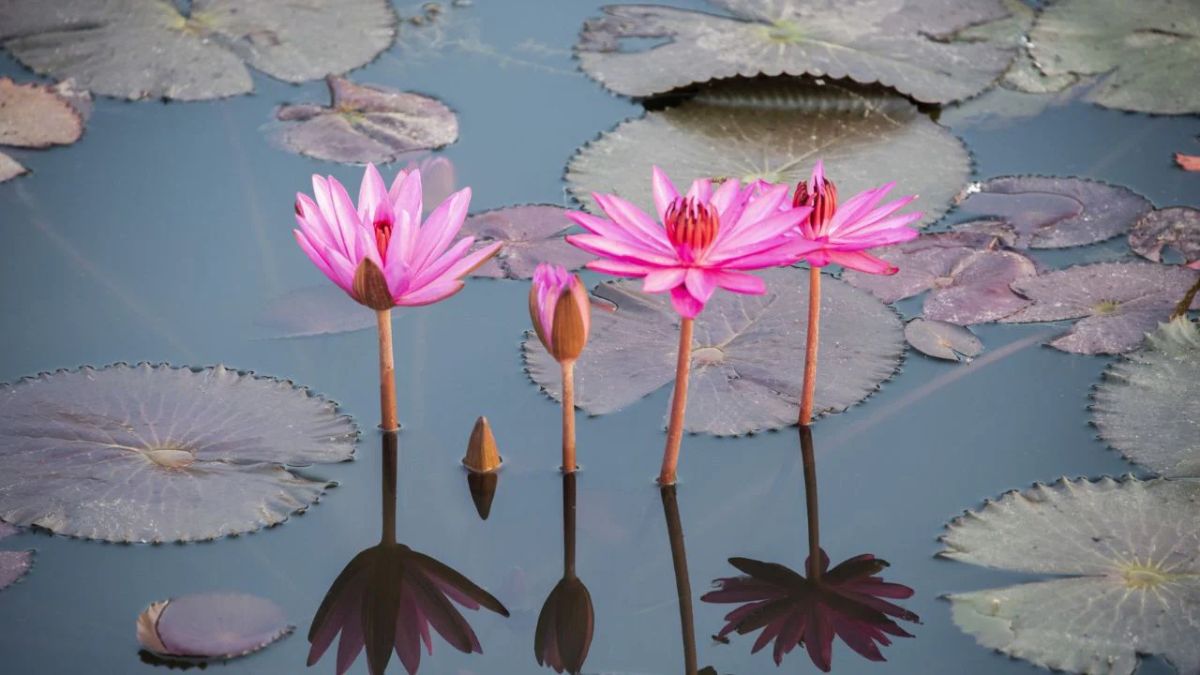The lotus flower is one of the most meaningful and sacred symbols in many Asian cultures. You’ve probably seen it in art, temples, tattoos, or festivals like the famous Lotus Festival in Los Angeles. But what does it really mean?
Table of Contents
Why is it so deeply rooted in spiritual traditions across Asia? This delicate bloom has a powerful story that stretches beyond beauty—it represents growth, purity, and enlightenment. Let’s look into why the lotus is more than just a flower in Asian traditions.
Symbolism
The core meaning of the lotus flower centers on its growth. It rises from muddy waters to bloom clean and untouched on the surface. That alone makes it a powerful symbol of rising above difficulties and achieving clarity. In many cultures, it’s linked with purity of the heart and mind, resilience, and rebirth.
Buddhism
In Buddhism, the lotus holds deep spiritual value. It represents enlightenment, the path from ignorance to awakening. Just like the flower, a person must rise through challenges to reach spiritual clarity. Different colors of lotus flowers in Buddhism have different meanings:
| Lotus Color | Symbolism |
|---|---|
| White | Spiritual purity and perfection |
| Blue | Wisdom and logic |
| Red | Love and compassion |
| Pink | Buddha himself |
| Purple | Mysticism and deeper spirituality |
Many Buddhist deities are often shown sitting on a lotus flower, symbolizing their pure, enlightened nature.
Hinduism
In Hinduism, the lotus is closely tied to the divine. Gods and goddesses like Vishnu and Lakshmi are depicted either holding or sitting on lotus flowers. The bloom represents divine beauty, fertility, and purity. It’s also a symbol of detachment—just like the lotus remains untouched by the mud it grows in, spiritual seekers are encouraged to rise above material distractions.
Ancient China
In Chinese culture, the lotus symbolizes harmony, peace, and the ability to overcome obstacles. It’s often used in literature and art to express noble qualities. In Confucianism, it represents honesty and moral integrity. The Chinese word for lotus, “he,” is also a homophone for “harmony,” adding another layer of cultural meaning.
Japan
In Japan, the lotus is appreciated for its quiet beauty and spiritual message. Although Buddhism influenced Japanese lotus symbolism, it’s also part of daily life. The flower represents inner peace and the journey of self-improvement. It’s often seen in temple ponds, reminding visitors of life’s deeper meanings.
Southeast Asia
Across countries like Thailand, Cambodia, and Vietnam, the lotus is used in religious rituals and daily practices. In Thailand, it’s a common offering at Buddhist temples. In Vietnam, the lotus is the national flower, symbolizing strength and resilience. It grows in abundance and serves as a reminder of peace and progress.
Modern Meaning
Today, the lotus is more than just a religious symbol. It’s used in yoga studios, wellness brands, and even fashion. Why? Because its meaning still resonates—it’s about growing through what you go through. In a world full of distractions and challenges, the lotus reminds people to stay grounded, rise above the mud, and bloom with purpose.
In Festivals
If you’ve ever been to a lotus festival, like the one held annually in Echo Park, Los Angeles, you’ll see how the flower brings people together. While the focus is on celebrating Asian culture, the lotus acts as a bridge—a symbol that connects traditions, generations, and communities. From decorative displays to actual blooms floating on lakes, it reminds everyone of the beauty that can grow from struggle.
In Art
The lotus is a popular subject in Asian art, from paintings and embroidery to carvings and sculptures. It often appears in mandalas and temple murals. The repetitive, layered petals are visually calming and symbolically powerful. Artists use the lotus to tell stories of faith, patience, and awakening.
In Daily Life
The influence of the lotus goes beyond religion and art. You’ll find it in home decor, architecture, and even food. In many Asian cuisines, parts of the lotus plant—like roots and seeds—are used in soups, teas, and desserts. It’s a real-life example of how beauty and usefulness can come from something so humble.
The lotus flower carries layers of meaning that stretch across religions, countries, and centuries. From its roots in muddy water to its perfect bloom, it’s a living metaphor for the human journey—messy, beautiful, and full of growth. No matter where you see it, the lotus reminds us all to keep rising, keep blooming, and stay true to our path.
FAQs
What does the lotus symbolize?
It symbolizes purity, resilience, and spiritual awakening.
Why is the lotus sacred in Asia?
It represents rising above challenges to reach enlightenment.
What do lotus colors mean?
Each color has a meaning—white for purity, pink for Buddha, etc.
Is the lotus used in Hinduism too?
Yes, it’s linked with gods like Vishnu and Lakshmi.
Can you eat parts of the lotus plant?
Yes, lotus roots and seeds are used in many Asian dishes.

















